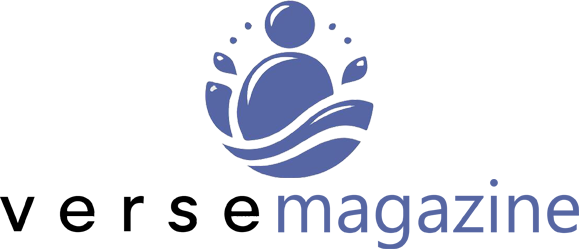A Corporate Software Inspector is a specialized tool or role within an organization designed to audit, manage, and monitor software installations across company systems. Its purpose is to ensure that all software used in a corporate environment is licensed, secure, and compliant with internal policies and external regulations.
In today’s digital business landscape, where organizations use dozens—if not hundreds—of applications, managing software assets has become essential not only for cost control but also for cybersecurity, compliance, and operational efficiency.
Why Businesses Need a Software Inspector
1. Software License Compliance
Unlicensed or misused software can result in severe legal penalties, fines, or reputation damage. A corporate software inspector helps organizations stay compliant with:
-
Vendor license agreements
-
Open-source licensing obligations
-
Industry-specific regulations (e.g., SOX, HIPAA, GDPR)
2. Cybersecurity Protection
Unauthorized or outdated software often contains vulnerabilities. Software inspectors identify such risks and help IT teams take action by:
-
Flagging end-of-life or unsupported apps
-
Detecting unauthorized installations
-
Ensuring patches and updates are applied
3. Cost Management
Many organizations overpay for unused or redundant software. A software inspector helps optimize licenses by:
-
Tracking actual usage
-
Identifying shelfware (purchased but unused software)
-
Consolidating overlapping tools
4. Inventory Visibility
With remote work and cloud adoption, tracking software across devices has become more complex. Software inspectors provide centralized dashboards that show:
-
What software is installed
-
Where it is installed (device/user level)
-
Whether it’s compliant and updated
Key Features of a Corporate Software Inspector Tool
1. Automated Discovery and Scanning
Modern software inspector tools automatically scan corporate networks to detect:
-
Installed software across all endpoints
-
Unauthorized or blacklisted applications
-
License keys and usage patterns
These tools often integrate with endpoint management systems, Active Directory, and cloud platforms for full visibility.
2. License Management and Auditing
Software inspectors store and track all license documentation, renewal dates, and compliance status. Some platforms provide:
-
Alerts for upcoming expirations
-
Centralized dashboards for license tracking
-
Audit logs for compliance reviews
3. Policy Enforcement
Set rules to prevent the installation of unapproved software. If a user installs something outside of the approved list, the inspector can:
-
Automatically block or uninstall the app
-
Notify IT administrators
-
Trigger compliance alerts
4. Software Usage Analytics
Track how often software is being used, by whom, and for how long. This helps decision-makers:
-
Justify software renewals or cancellations
-
Identify training needs for underused tools
-
Streamline application portfolios
Who Uses a Corporate Software Inspector?
IT Administrators
They use it to maintain oversight of all software assets, enforce policies, and secure endpoints.
Compliance Officers
They rely on the software inspector to generate reports for audits, legal reviews, and regulatory filings.
CIOs and Procurement Teams
These stakeholders use insights from software inspectors to make smarter purchasing and budgeting decisions.
Cybersecurity Teams
They monitor vulnerabilities in outdated software and respond to potential threats originating from shadow IT.
Leading Tools for Software Inspection in Enterprises
Several tools in the market offer comprehensive software inspection and asset management features. Some top solutions include:
| Tool | Key Features | Suitable For |
|---|---|---|
| Flexera | License optimization, compliance tracking | Large enterprises |
| ManageEngine AssetExplorer | Auto-discovery, audit reports | SMBs and mid-sized companies |
| Snow Software | Software usage analytics, SaaS management | Hybrid IT environments |
| Ivanti IT Asset Management | Patch management, license reconciliation | Enterprises needing unified endpoint management |
| Microsoft Intune | App deployment, inventory for Windows devices | Microsoft-centric environments |
Each of these tools offers varying levels of functionality and is suited to different organizational sizes and needs.
Risks of Not Using a Software Inspector
Without a corporate software inspector, organizations face:
-
Legal risks from unlicensed software usage
-
Security vulnerabilities due to outdated or malicious applications
-
Operational inefficiencies from redundant tools
-
Poor audit performance, especially in regulated industries
-
Uncontrolled IT costs, including overspending on unused apps
The cost of non-compliance or a cyber breach often far outweighs the investment in a software inspection tool.
Implementation Best Practices
1. Create a Software Policy
Define what software is approved, how it should be installed, and what the consequences of policy violations are.
2. Choose the Right Tool
Select a software inspector that integrates with your existing infrastructure (e.g., Windows, Linux, Mac, cloud environments).
3. Conduct an Initial Audit
Perform a full scan of all devices and servers to create a baseline inventory and detect discrepancies.
4. Regular Monitoring and Reporting
Set up scheduled scans, real-time alerts, and monthly usage reports to keep tabs on your software landscape.
5. Educate Employees
Train staff on the importance of using approved software and following IT policies.
Future Trends in Software Inspection
As businesses become more reliant on cloud-based and hybrid environments, corporate software inspectors are evolving to include:
-
SaaS application discovery and usage monitoring
-
AI-driven risk assessment for unknown or new software
-
Integration with zero-trust security architectures
-
Real-time compliance scoring based on dynamic risk profiles
The role of software inspection will grow beyond compliance—it will become central to strategic IT planning, budgeting, and cybersecurity defense.
Final Thoughts
A Corporate Software Inspector is no longer a luxury—it’s a necessity in the modern digital workplace. As the volume and complexity of software tools increase, businesses need reliable systems to track, control, and optimize their application landscape.
By implementing an effective software inspection tool and process, organizations can improve security, compliance, efficiency, and cost savings while empowering IT and leadership teams to make better decisions. For companies seeking comprehensive IT management solutions, partnering with the best managed IT services in Washington DC can further strengthen their cybersecurity and compliance strategies.







